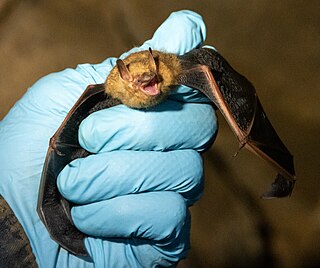
The tricolored bat or American perimyotis is a species of microbat native to eastern North America. Formerly known as the eastern pipistrelle, based on the incorrect belief that it was closely related to European Pipistrellus species, the closest known relative of the tricolored bat is now recognized as the canyon bat. Its common name "tricolored bat" derives from the coloration of the hairs on its back, which have three distinct color bands. It is the smallest bat species in the eastern and midwestern US, with individuals weighing only 4.6–7.9 g (0.16–0.28 oz). This species mates in the fall before hibernation, though due to sperm storage, females do not become pregnant until the spring. Young are born helpless, though rapidly develop, flying and foraging for themselves by four weeks old. It has a relatively long lifespan, and can live nearly fifteen years.
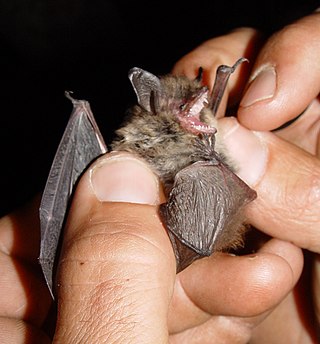
The mouse-eared bats or myotises are a diverse and widespread genus (Myotis) of bats within the family Vespertilionidae. The noun "myotis" itself is a Neo-Latin construction, from the Greek "muós and "oûs", literally translating to "mouse-eared".

Mount Nimba Strict Nature Reserve is a protected area and UNESCO World Heritage Site located in both Guinea and Côte d'Ivoire, extending over a total of area of 175.4 km2, with 125.4 km2 in Guinea, and 50 km2 in Côte d'Ivoire. The reserve covers significant portions of the Nimba Range, a geographically unique area with unusually rich flora and fauna, including exceptional numbers of single-site endemic species, such as Nimbaphrynoides, the Nimba otter shrew, and multiple species of horseshoe bats. Its highest peak is Mount Richard-Molard at 1,752 m (5,750 ft), which is the highest peak of both countries.

The silver-tipped myotis is a species of mouse-eared bat found in a range of lowland habitats in the Americas.

Hodgson's bat, also called the copper-winged bat or black-and-orange myotis, is a species of vesper bat in the genus Myotis, the mouse-eared bats. Favouring mountain forests, it is found throughout Central, Southeast, and East Asia, from Afghanistan to Taiwan. It is about 5 centimetres (2.0 in) long and is distinguished from most other species of bat in this range by its yellowish colouration.
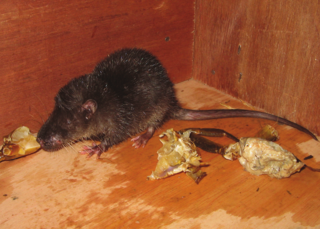
The Nimba otter shrew is a dwarf otter shrew and belongs to the mammal family Potamogalidae. Otter shrews are shrew-like afrotherian mammals found in sub-Saharan Africa. They are most closely related to the tenrecs of Madagascar. This species belongs to the genus Micropotamogale, literally meaning "tiny river weasel". It is native to the Mount Nimba area which rests along the border of Liberia, Guinea, and Côte d’Ivoire in West Africa.
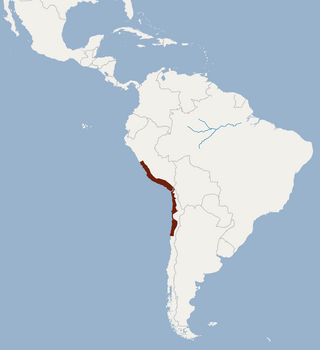
The Atacama myotis is a species of vesper bat in the family Vespertilionidae. It is found in Chile and Peru, an example ecoregion of occurrence being the Chilean matorral.
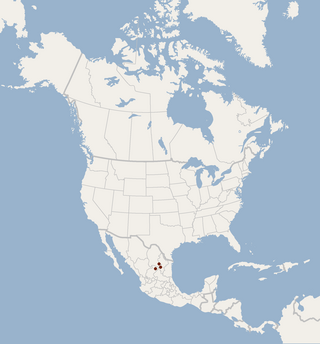
The flat-headed myotis is a species of vesper bat. It is endemic to Mexico where it is found in certain montane forests in the Sierra Madre Oriental in the northeast of the country. Once thought to be extinct, this bat was rediscovered in 2004 by Joaquín Arroyo-Cabrales and colleagues. The species is now classified as endangered by the IUCN.
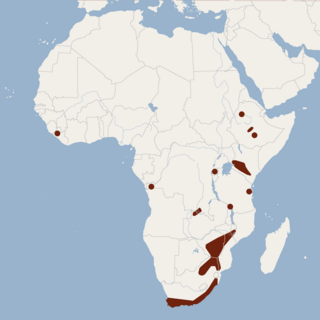
The Cape hairy bat, also known as little brown bat, Temminck's mouse-eared bat, Cape myotis, tricoloured mouse-eared bat, Cape hairy myotis, Temminck's hairy bat and three-coloured bat is a species of vesper bat that is found in Sub-Saharan Africa.
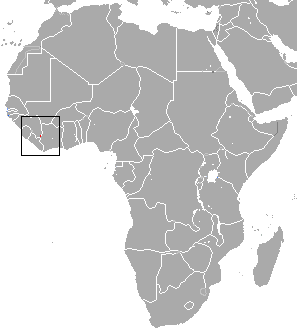
Lamotte's roundleaf bat is a species of bat found only at Mount Nimba on the border of Côte d'Ivoire, Guinea and Liberia. It is critically endangered.

Myotinae is a subfamily of vesper bats. It contains three genera: Eudiscopus, Myotis, and Submyotodon. Before the description of Submyotodon and analysis of its phylogenetics, as well as a phylogenetic analysis of Eudiscopus, the only member of Myotinae was Myotis.
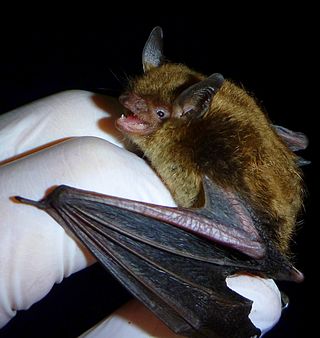
The little brown bat or little brown myotis is an endangered species of mouse-eared microbat found in North America. It has a small body size and glossy brown fur. It is similar in appearance to several other mouse-eared bats, including the Indiana bat, northern long-eared bat, and Arizona myotis, to which it is closely related. Despite its name, the little brown bat is not closely related to the big brown bat, which belongs to a different genus.
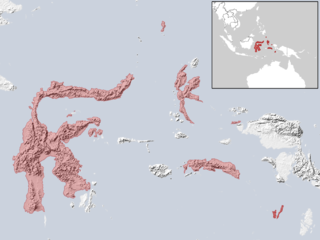
The Maluku myotis, also commonly known as the Arafura large-footed bat, is a species of mouse-eared bat. Native to Indonesia, and possibly New Guinea and northern Australia, it one of several species known as "fishing bats" because they catch their prey on the surface of water, scooping it up with their large feet.

The Nimba Range forms part of the southern extent of the Guinea Highlands. The highest peak is Mount Richard-Molard on the border of Côte d'Ivoire and Guinea, at 1,752 m (5,748 ft). "Mount Nimba" may refer either to Mount Richard-Molard or to the entire range. Other peaks include Grand Rochers at 1,694 m (5,558 ft), Mont Sempéré at 1,682 m (5,518 ft), Mont Piérré Richaud at 1,670 m (5,480 ft), Mont Tô at 1,675 m (5,495 ft), and Mont LeClerc 1,577 m (5,174 ft), all of them are located in Guinea. Mount Nimba Strict Nature Reserve of Guinea and Côte d'Ivoire covers significant portions of the Nimba Range.
Rosevear's serotine is a species of vesper bat that lives in Guinea and Liberia. It was described as a new species in 2013. It is listed as endangered by the IUCN.
The Zenati myotis is a rare species of mouse-eared bat that is restricted to North Africa. It is very rare in Morocco, being restricted to just four localities ranging from the Rif to the Atlas Mountains. Aside from Morocco, it is only known from three populations in northern Algeria, although it is possible that populations may exist in Tunisia. There are two genetically distinct haplogroups in the Atlas Mountains that could be further considered distinct subpopulations. It is a member of the Natterer's bat species complex and closely resembles the cryptic myotis, though its closest relative is Escalera's bat . 300,
Nancy B. Simmons is an American zoologist, mammalogist, professor, and author. Specializing in bats, Simmons has conducted extensive research on the morphology and evolutionary history of numerous bat species. She is also the curator-in-charge of the Department of Mammalogy at the American Museum of Natural History and a professor at the Richard Gilder Graduate School.
The isabelline white-winged serotine is a species of West African bat belonging to the genus Neoromicia. It is found in Guinea.













